Driving with seized calipers is dangerous and can lead to extensive brake system damage to both sets of brakes. Knowing the signs of a seized caliper will help you catch it quicker. Here we look at the signs of seized calipers, why calipers seize up, and how to fix a seized caliper.
Anatomy of a seized caliper
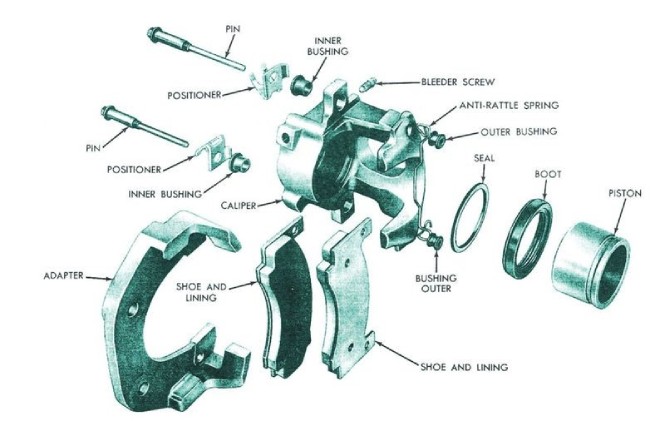
**Photo courtesy: Hemmings
As you brake, the pressure from the brake fluid on the caliper’s pistons pushes the brake pad against the rotor. The caliper is set on the rotor and squeezes the rotor to slow down the car as you brake. The caliper components include brake pads, pistons, and slider pins. All of these components can seize at any time.
Signs the caliper is seized
Ignoring the following signs will lead to brake system damage that can be expensive. It also puts you and your passengers in danger, especially if you have to brake quickly.
Feeling the brake is on: As you drive, it feels like the wheel is dragging. You can feel the wheel fight to roll smoothly. At its worst, you can’t drive the car because the wheel can’t move.
Car pulls to one side: As you brake, you can feel the car pull to the side where the caliper has seized.
Brake fluid leak: You may see brake fluid leaking on the tire or ground when the car is parked.
Low brake fluid level: If you have a brake fluid leak, you may notice the brake fluid is lower than the last time you checked it.
Soft brake pedal: When the fluid leaks, air fills the space in the brake line. As you press the brake pedal, your foot goes to the floor much easier.
Loss of braking power: You can feel that you have lost some ability to brake effectively.
Brake smells like it is burning: As the brakes get increasingly hotter, you can smell the burning.
Smoking brakes: If you continue driving as you smell the brake burning, it will continue to get hotter, and there may be smoke.
Why calipers seize
You’re not driving the car – When a vehicle is parked for an extended period, the seals can dry up, and moisture can corrode metal parts. Regular car use keeps the corrosion from building up and seizing the calipers. Taking the car for a drive at least monthly can prevent this issue.
The elements – Being under the car, calipers and other brake parts are exposed to dirt, grime, and moisture. Vehicles parked outside or in grassy areas are exposed all the time. The elements easily affect brake pads, calipers, and rotors and can become sticky or seize up.
Corrosion – Brake fluid is hygroscopic. Its ability to collect moisture can corrode the brake system from the inside, just as not driving the car over time will cause exterior corrosion.
Slanted brake pads – Brake pads wear out over time, but when the worn-down pads become worn unevenly, they can slant and throw the calipers out of alignment.
Frozen slide pins – If your calipers have slide pins and the pins seize, only the piston side of the disc will make contact with the brake pads. Despite the car driving, as always, you have a reduction in braking power that will speed up wear on the brake pads and put the vehicle’s occupants in danger.
Temperature changes – Brakes heat up, then cool down consistently, affecting the piston boot on the caliper. As the piston boot ages, it can dry out and crack, letting in moisture that can corrode the caliper pistons.
Poor lubrication – Poorly lubricated brake components, including the calipers, will cause them to seize up.
Replacing vs. fixing the calipers
Fixing a seized caliper doesn’t mean it won’t seize again. Corrosion is a never-ending process that reoccurs on the calipers after repairing them. But sometimes, your budget has no room for car repairs. While it’s always best to replace the seized caliper, fixing the caliper is the way to go if you can’t afford to replace them.
Fixing the Seized Caliper
Tools
- Lug wrench
- Car jack
- Brake cleaner
- Socket wrench and sockets
- Rags
- Caliper and brake grease
- Wheel chokes
Step 1: Park the vehicle on a flat surface and jack up the car on the side of the affected caliper. Make sure the jack is sable. Place the wheel chokes behind the wheels you are not working on to keep the car from rolling backward.
Step 2: Remove the lug nuts and take off the tire. Be sure to place the lug nuts in a safe and convenient spot.
Step 3: Now that you can see the brakes, spray the brake cleaner generously on the brake linings and pads to remove dirt, oil, and grime. Clean brake pads won’t squeak or stick and are much safer.
Step 4: Find the bolts holding the calipers in place. Unscrew the bolts, pull the calipers up, and then away from their holding bracket. Once the calipers are off, you can remove the brake pads using your fingers. Look over the brake pads to ensure your brake pads are over ¼-inch thick. If they are less than ¼ of an inch thick, you will need to replace them with new pads. Thin brake pads can cause the calipers to seize!
Step 5: While the calipers are off, take this time to examine the caliper boot for tears and cracks. Damaged boots let in dirt, grime, and moisture that damage the calipers and other components. If the boot or pins need changing, you should do it now.
Now spray the caliper generously with brake cleaner and scour all the grime and grease off the caliper. Once clean, make sure the caliper is still in good condition. If the caliper needs to be replaced, do this now.
Step 6: Once the calipers are clean and you have decided they are keepers, lubricate the calipers, pins, slides, pistons, and the back of the brake pads with the caliper lubricant. Always use grease made for calipers. You want to lightly lubricate them. Too much grease will create other issues.
Step 7: Once all the parts are lubricated, replace the caliper on the bracket and insert the bolts. Once they are tightened by hand, you can use the socket wrench to finish tightening them. DO NOT OVER-TIGHTEN!
Put the brake pads in place and retighten them. Replace the tire and tighten the lug nuts. Ensure they are not over-tightened.
Maintaining your brake calipers
Caliper maintenance should be done every 12,000 miles. If you live in areas with lots of snow where salt is used regularly, you should do this maintenance more often. Regularly cleaning and lubricating the calipers and their parts will make driving safer and less costly.
In between maintenance, you can go to a car wash or use a brush and soapy water to remove grease and grime from the braking system.
After cleaning, relubricate the brake system with a brake and caliper lubricant.



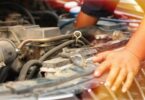
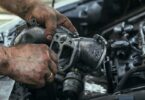
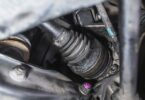
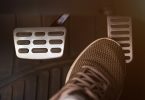
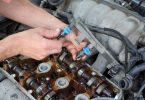
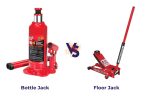

Leave a Comment